Blog Post
A Pathway to Sustainable American Cities: A Guide to Implementing the SDGs
Mar 01, 2019
Since 2015, cities across the United States have begun incorporating the SDGs to reinforce their existing sustainability plans and to provide a common language to discuss goals among peer cities. Since then, SDSN has proudly been a partner to the cities at the forefront of this movement through the USA Sustainable Cities Initiative, partnering with key stakeholders in cities such as Baltimore, San Jose, New York and Los Angeles. The ranks of cities who have understood the benefits of the SDG framework have continued to grow.
Read the Report
In January 2019, SDSN hosted a workshop alongside the 2019 Winter Meeting of the US Conference of Mayors with practitioners and experts to discuss their experiences and consider lessons detailed in the draft practitioner guide: “A Pathway to Sustainable American Cities: A Guide to Implementing the Sustainable Development Goals.” This guide, a re-imagining of a 2016 guide prepared for a global urban audience, presents 10 steps for cities to consider on their way to adapting and adopting the global framework for their own city.
Executive Summary
Mayors, city council members, and all who work in city government know that success for a city is nonpartisan. The to-do list is a long one: promote economic development and opportunity, foster security and safety, provide clean drinking water and air, support quality schools, ease transportation and mobility, provide access to health care, promote civic engagement and community, ensure adequate housing, and respond to emergencies and severe weather events (to name a few). This guide encourages cities to take a holistic approach to tackling these challenges, developing an innovative, long-term vision for their cities to thrive and drawing on the experiences of others to guide the way.
Over the last 15 years, U.S. cities of all sizes have started developing long-term sustainability plans that identify demographic trends, anticipate their cities’ needs, and set long-term environmental goals. The planning process also often includes a range of input from city residents and other stakeholders, such as civic institutions and the private sector. In addition, the plans are updated regularly and progress is tracked publicly.
At the international level, 193 United Nations countries adopted the Sustainable Development Goals (SDGs) in 2015 after a rigorous process that incorporated expert analyses, as well as input from many levels of civic organizations. The 17 SDGs combine economic development plus social, environmental, and good governance goals, recognizing that the goals complement and support one another and are interdependent.
As it turns out, the SDGs and the goals that U.S. cities have been striving toward have a lot in common. They are both widely recognized as a solid foundation for a visionary and achievable framework. Bringing in the SDGs can complement and strengthen traditional sustainability plans by shedding light on how environmental challenges and goals are interwoven with the social and economic conditions of a city and how setting goals and targets in one area may benefit other areas, as well as serve more city residents. Furthermore, adopting the SDGs can help to amplify existing goals and platforms for discussion and development with city residents, state and national government agencies, and across city networks globally. While the SDGs will not all apply in the same way for all cities, they can be prioritized and customized to meet the conditions and requirements for any city.
With this guide, cities can take advantage of the SDG framework and other cities’ experiences, saving valuable time and resources in setting goals and strategies while not reinventing the wheel. This guide also provides case studies and examples from U.S. cities that have begun to use the SDGs to fortify their own planning by adapting them to the local context. Cities such as Los Angeles, New York, Orlando, and San José are leading the way, showing the utility of the SDG framework to broaden their ambition and bolster their existing plans and strategies.
Following the ten tested steps within this guide can help make such planning exercises a success. These steps are based upon lessons from recent planning exercises in New York, San José, and other cities, as well as the extensive experience of the authors, who have collectively been involved in urban sustainability planning for more than 30 years.
The SDG framework may help cities identify priorities and set long-term goals. The goals are designed to reveal the interdependent systems at play in sustainable development, such as how the use of fossil fuels affects not only climate change but also air quality and public health, and thus poverty rates and economic opportunities. By following these ten steps, cities can harmonize common goals across agencies. Added benefits include finding gaps, infusing priorities into a budget process, cutting programming redundancies and saving resources, and tracking outcomes. Cities can also engage across an expanding network of other governments and institutions that are pursuing the same goals for ideas and expertise. If integrated and managed well, the SDGs can help to strengthen local communities with their values of transparency, inclusion, and engagement.
No need to reinvent the wheel, no need to add another layer—this guide shows how to fast-track the process from beginning to end. Through the SDGs, cities can improve their quality of life on a local level while leading the world on the environment, the economy, and social issues.
SIGN UP FOR SDSN UPDATES
Get our latest insights, opportunities to engage with our networks, and more.

SDSN mobilizes global scientific and technological exertise to promote practical solutions for sustainable development, including the implementation of the Sustainable Development Goals (SGDs) and the Paris Climate Agreement.
Paris
19 rue Bergère
75009 Paris
France
+33 (0) 1 84 86 06 60
New York
475 Riverside Drive
Suite 530
New York NY 10115 USA
+1 (212) 870-3920
Kuala Lumpur
Sunway University
Sunway City Kuala Lumpur
5 Jalan Universiti
Selangor 47500
Malaysia
+60 (3) 7491-8622
Designed by
Northeast Kingdom Online. Powered by
NEKO|360.
